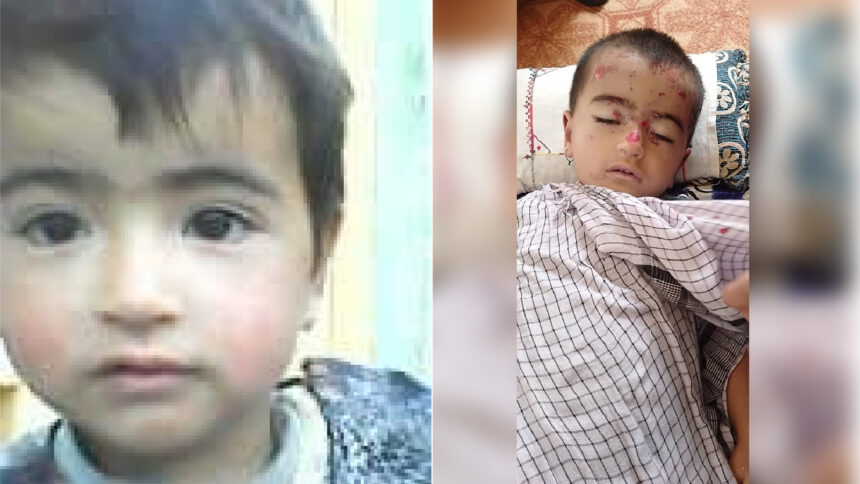RASC News Agency: In one of the most chilling sequences of violence to strike northern Afghanistan in recent months, residents of Takhar Province are reeling after a family in Warsaj District lost two of its youngest members to brutal killings in less than a week murders that remain shrouded in mystery and worsened by the Taliban’s indifference. On Thursday, August 7, three-year-old Mohaddesa Parsa was abducted and murdered by unknown assailants in the village of Tarsht. According to witnesses, she had been playing quietly in the courtyard alongside her mother. Her mother stepped away for only a few minutes when she returned, Mohaddesa was gone. The family and neighbours searched frantically, combing fields, riverbanks, and alleys throughout the evening. Nearly twenty hours later, the little girl’s lifeless body was found roughly three kilometres from her home.
There were no signs of local feuds, personal disputes, or any history of hostility toward the family. In fact, residents describe them as generous, law-abiding, and widely respected. Yet the tragedy becomes even darker when seen against recent events: just three days earlier, another child from the same family 13-year-old Ahmad Taha Forotan was murdered in the same district under strikingly similar circumstances. Local Taliban authorities have failed to release any formal statement regarding either killing. Sources say that after Ahmad Taha’s death, a superficial “investigation” was opened but was marred by indifference, lack of urgency, and zero follow-through. In Mohaddesa’s case, the Taliban reportedly did not initiate an inquiry at all there was no forensic examination, no crime scene preservation, no canvassing of witnesses, and no arrests.
Security observers and residents say the killings resemble targeted intimidation tactics often associated with Taliban-linked factions. The indicators are telling:
Deliberate investigative inertia, Failure to pursue obvious leads, Reported harassment and intimidation of the victims’ family by Taliban members, Historical targeting of families linked to the former Afghanistan’s government, civil society, or anti-Taliban sentiment
“This is not negligence it is orchestrated terror,” one community elder told RASC, speaking under strict anonymity. “When those in power refuse to protect children, it is because they do not see their lives as worth protecting.” The psychological impact on the bereaved family is indescribable. Their grief is compounded by the knowledge that their children’s killers are still at large and that justice is not merely delayed but deliberately denied. In Warsaj, parents now keep their children indoors at all times. Community gatherings have dwindled, schools are half-empty, and residents whisper of a future in which living under Taliban rule means permanent, inescapable fear.
Local human rights advocates warn that these murders are part of a broader pattern of mysterious killings spreading across northern Afghanistan especially in provinces such as Takhar, Kunduz, and Badakhshan where former civil servants, journalists, and even ordinary villagers perceived as “disloyal” to Taliban ideology have been targeted. In many cases, the killings remain unresolved precisely because those tasked with enforcing justice are either directly involved or protecting the perpetrators. With no credible investigation, no arrests, and no assurances of public safety, the fundamental question looms: In a country where even toddlers are not safe from abduction and murder, what does survival under Taliban governance truly mean?






